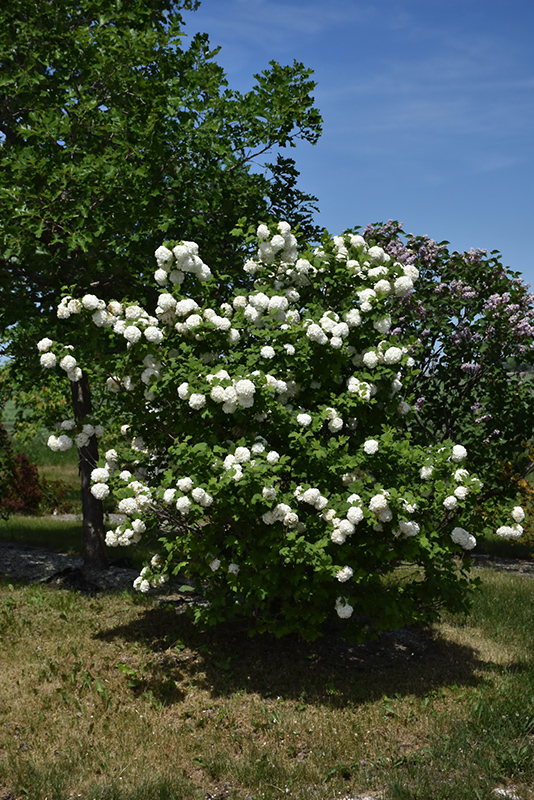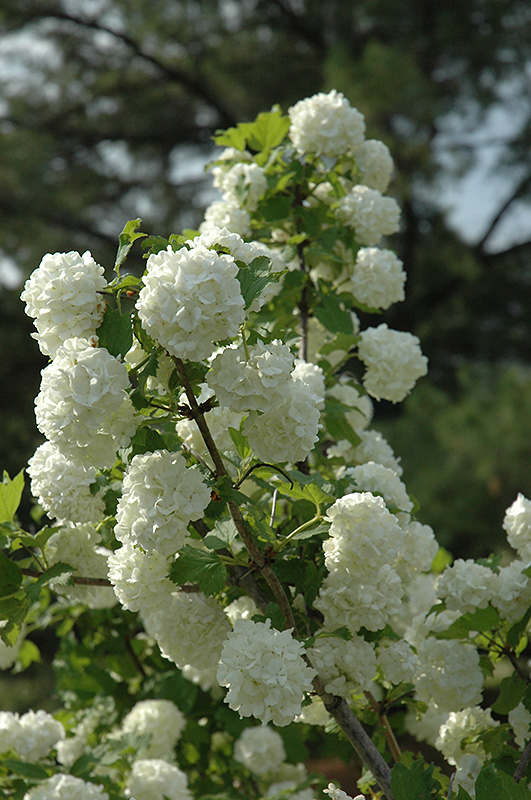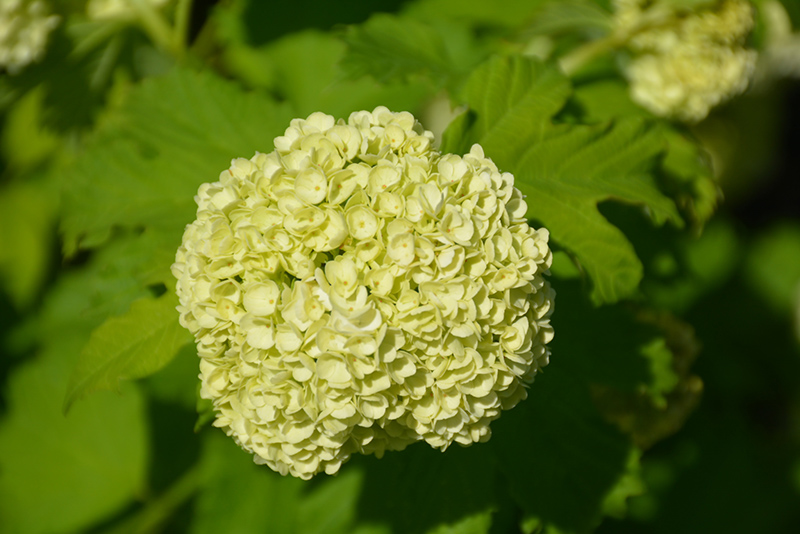Old Fashioned Snowball Viburnum
Viburnum opulus 'Roseum'
Height: 12 feet
Spread: 14 feet
Sunlight:
![]()
![]()
Hardiness Zone: 3a
Other Names: European Highbush Cranberry
Description:
A popular shrub with rounded clusters of snowball-shaped flowers in spring, very showy, and good fall color, does not produce fruit; upright and spreading, will grow quite large; great as a solitary accent, flowers best in full sun; best pruning May-July
Ornamental Features
Old Fashioned Snowball Viburnum features showy balls of white flowers at the ends of the branches in late spring. It has dark green deciduous foliage. The large serrated lobed leaves turn an outstanding deep purple in the fall. The smooth gray bark and gold branches add an interesting dimension to the landscape.
Landscape Attributes
Old Fashioned Snowball Viburnum is a multi-stemmed deciduous shrub with an upright spreading habit of growth. Its average texture blends into the landscape, but can be balanced by one or two finer or coarser trees or shrubs for an effective composition.
This shrub will require occasional maintenance and upkeep, and should only be pruned after flowering to avoid removing any of the current season's flowers. It is a good choice for attracting butterflies to your yard, but is not particularly attractive to deer who tend to leave it alone in favor of tastier treats. It has no significant negative characteristics.
Old Fashioned Snowball Viburnum is recommended for the following landscape applications;
- Accent
- Mass Planting
- General Garden Use
Planting & Growing
Old Fashioned Snowball Viburnum will grow to be about 12 feet tall at maturity, with a spread of 14 feet. It tends to be a little leggy, with a typical clearance of 1 foot from the ground, and is suitable for planting under power lines. It grows at a medium rate, and under ideal conditions can be expected to live for 40 years or more.
This shrub does best in full sun to partial shade. It prefers to grow in average to moist conditions, and shouldn't be allowed to dry out. It is not particular as to soil type or pH. It is highly tolerant of urban pollution and will even thrive in inner city environments. This is a selected variety of a species not originally from North America.




